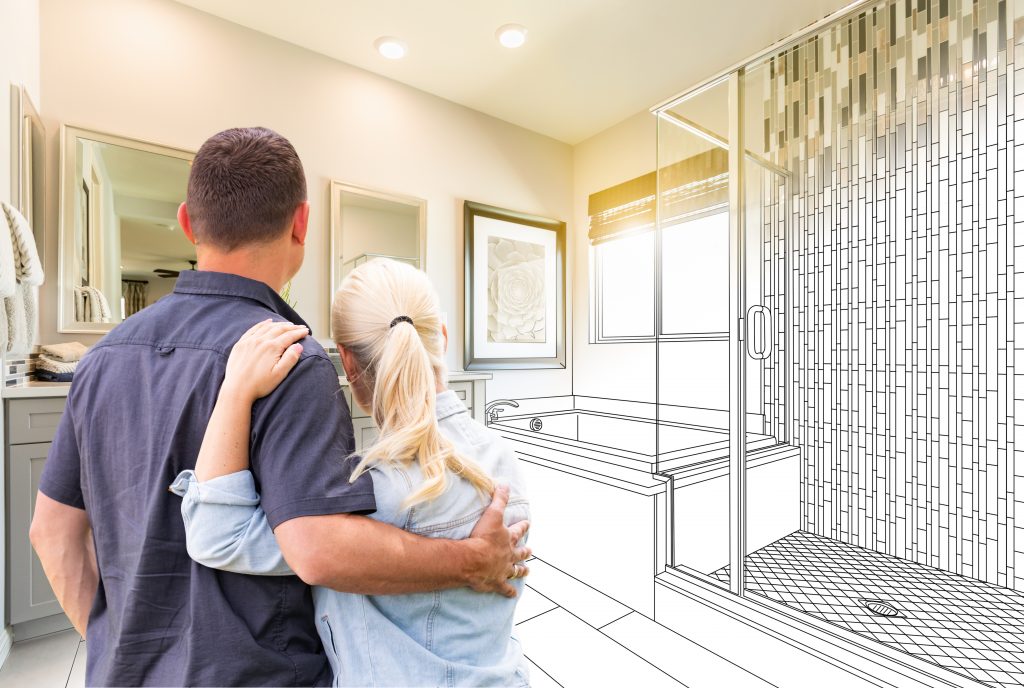The first in a series that explores the trends in new home construction and remodeling to improve the comfort, aesthetic, and market value of your home.
From the earliest man, a home was simply a place where he could find shelter and protection from the weather, predators, and other humans. It was a cave, a hole in a mountain and most likely lacking anything we would remotely refer to as creature comforts.
As the human race has evolved over the centuries, so have our homes and the role they play in our lives. In essence, our homes have always echoed who we really are and served as benchmarks showcasing our journey and success in life. Where the home is located, how large it is, the amount of acreage, what it’s made of, how it looks, and what’s inside all contribute to the home’s character and atmosphere and serve as a reflection of the people who own it or live there. Still a bastion of safety and security against Mother Nature and unwanted visitors, our homes now, more than ever, embody our personalities, philosophies, egos, and position.
While the relationship between a home and homeowner may be a topic best suited for philosophers or the social sciences, we want to examine how homes have evolved and what homeowners today want in their humble abodes. With marked advancements in technology, building materials, structural design and other elements, homeowners now have unlimited potential to create their idyllic private space. At the top of their list…homeowners want a place that enriches their life and lets them enjoy basking in an environment that mirrors their true personalities.
So, if that’s what homeowners want, the question to ask is, “how do they achieve that?” The answer is multidimensional. No one component used in creating the perfect space can satisfactorily address that issue. It must be a combination of many factors including, but certainly not limited to, architectural styles, urban versus rural environments, the home’s footprint, energy efficiency, smart home capabilities, the type of building materials used and possibly creature comforts.
According to Merriam-Webster, “creature comfort” is defined as, “something (such as food, warmth, or special accommodations) that gives bodily comfort.” For a homeowner, a special accommodation might mean elevated amenities such as heated bathroom floors, a wine cellar complete with tasting room, an elevator or dumbwaiter to service upper floors of the house.Even an atrium, outdoor living space complete with fire pit, butler’s style kitchen, and entertainment center can make the list. With considerations ranging from where to build and how large, to what it’s going to look like and what are the conveniences, creation of the perfect environment is a process limited only by one’s vision and financial wherewithal.
Over the course of the coming year, Cityview is going to delve into what homeowners in and around Knoxville are doing as they build or remodel their homes. Through six issues we’re going to bring you local trends as experienced by a number of our area’s most esteemed builders, architects, contractors, realtors, interior designers, and other industry professionals as we look at many of the different factors involved in facilitating the evolution of the picture-perfect space.
We invite you to join us in our journey and we look forward to sharing Knoxville’s most impressive trends in building.
Foam Insulation
An essential element to the ambiance of any home is how it makes you feel when you’re in it. In particular, we’re referring to the climate of the home or more specifically, the comfort factor.
Is the den drafty? Does the dining room seem warmer than the master bedroom? Why is it so cold in the closet? These are all questions that relate to how energy efficient a home is and how well insulated it is…or isn’t.
When it comes to energy efficient insulation, foam may be the single best option. While fiberglass is still widely used, there are some significant advantages to creating a fully encapsulated space, and that is exactly how spray foam works, everything is fully sealed including the eaves.
One of the most common uses of foam is on the roof. Unlike fiberglass which lays on the ceiling, open cell foam is sprayed directly onto the roof and still allows the substrate to breathe. This stops the heat or cold right at the source. During summer in East Tennessee, attic temperatures in traditionally insulated homes often reach 145 degrees Fahrenheit. Foam attics on the other hand, run about 8-10 degrees above the home thermostat setting. The foam typically goes over the garage as well creating a more comfortable overall environment.
You can expect 25-30% savings on the energy bill, says Mike Grace, owner of Foam Works of East Tennessee. That is significant in anyone’s book but Grace says that savings of up to 50% can be achieved if the walls are foamed as well. Existing homes can still get foam in the attic or crawl space, but only new construction lends itself to the walls being sprayed.
Homes that incorporate closed cell foam in the walls can see a 30% increase in rigidity, and that makes for a significantly stronger structure. But is the increased cost really worth it? Grace says the savings are typically so significant that customers are able to recover the additional cost in a few years, and after that? Well who wouldn’t want a super low energy bill for the life of their home.
Solar Shingles
Aside from integrating foam insulation products and technology into a home to help preserve its energy efficiency, many homeowners are also keenly interested in lowering their home’s energy consumption and cost of operation through the application of solar shingles. For decades, solar power was heralded as the replacement for electricity provided through a local utility. The battle has always been the cost of installing a solar system, the length of time required to provide savings and offset that cost, and the amount of power generated versus the cost of the electricity provided by the utility.
The early days of solar saw costly installations, cosmetically unappealing systems mounted on the home or adjacent to it, and the minimally effective generation of power. And, then there was the bank of collection batteries necessary to store and redistribute the power through the home! But, that was then.
With the rise in utilizing solar panels, consumers now have access to installments that do not compromise aesthetics. In the form of roofing shingles, solar power can be harnessed and directly used in your home. Project Sunroof, created by Google, includes an estimator for potential savings. By entering your home address, Google uses its expansive data to calculate how much sun reaches your roof and estimates how much money you could save in energy per year, as well as average installation costs for your area. Project Sunroof details that are there are only 78 existing solar installations in Knoxville, but 83 percent of buildings in the area are solar-viable.
More homeowners are looking to go green, and solar shingles are a great way to start. Traditional solar panels are heavy, costly, and can ruin the look of your property. Solar shingles, on the other hand, require very little maintenance after installation and produce no emissions. At the forefront of production is Tesla. In 2018, the famed car brand performed the first installations of the solar glass tiles. The roof tiles contain solar cells and blend in seamlessly with the regular roofing materials. Although the upfront cost for solar shingles and the installation is costly, there is potential for a homeowner to reduce their annual energy costs. Solar shingles are not readily available yet, but hopefully soon. Whatever system you choose, you are certain to see energy savings, plus possible tax credits.
During the course of the year, we will be covering various building trends in our area. Be on the lookout for facts and information from local resources and experts as we explore what’s next in the home building industry.
